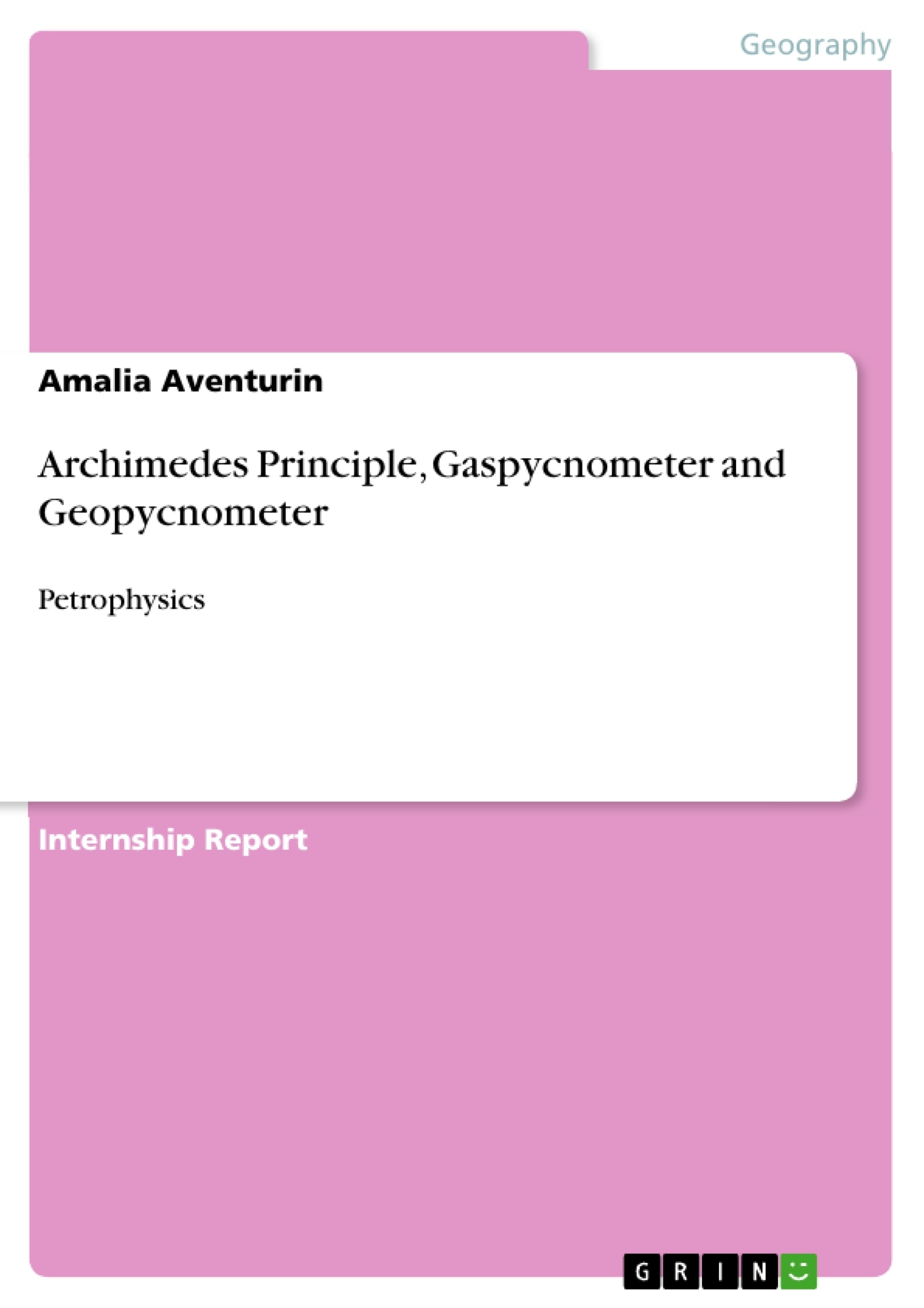The Archimedes method is used to determine the volume of an irregular shaped solid object. This is done by determining the dry mass of an object (which is given), the fully water saturated mass, measured with the Kern 572, and the mass of the sample when hanging in a water-filled bowl. Both measurements – the saturated and hanging-mass in a water-bowl – were done five times each by about 19.5°C air temperature and about 18°C water temperature. For this experiment we used two samples: G1 is a black stone with small mica particles and bigger white quartz inclusions. This stone is coarse-grained and compacted and therefore it could be a gabbro. G2 is a greenish sandstone with small particles and lesser compaction. The results of the measurements are shown in table 1. [...]
Inhaltsverzeichnis (Table of Contents)
- Archimedes Principle measurement
- Gaspycnometer measurment
- Geopycnometer measurment
- Conclusion
- References
Zielsetzung und Themenschwerpunkte (Objectives and Key Themes)
This laboratory course aims to provide practical experience in determining the volume and density of irregularly shaped solid objects. The course focuses on the application of the Archimedes principle and uses gaspycnometer and geopycnometer measurements.
- Archimedes principle and its application in determining volume and density.
- Measurement techniques using gaspycnometer and geopycnometer.
- Calculation of bulk density and matrix density.
- Determination of porosity.
- Propagation of uncertainty in measurements.
Zusammenfassung der Kapitel (Chapter Summaries)
- Archimedes Principle measurement: This chapter details the practical procedure for determining the volume of irregular objects using the Archimedes principle. It covers the measurement of saturated weight, immersed weight, and the calculation of density. Two samples (G1 and G2) are analyzed, and the results are presented in a table.
- Gaspycnometer measurment: This chapter explains the use of gaspycnometer to measure the volume and density of porous materials. The method involves filling the sample chamber with a known volume of gas and measuring the pressure change. The results are used to calculate the bulk volume and density of the sample.
- Geopycnometer measurment: This chapter focuses on the geopycnometer technique for determining the density of solids. The method involves placing the sample in a sealed chamber with a known volume of fluid. The pressure change is measured, and the density is calculated based on the volume and pressure change.
Schlüsselwörter (Keywords)
The primary keywords and focus topics of this text include Archimedes principle, gaspycnometer, geopycnometer, density determination, bulk density, matrix density, porosity, propagation of uncertainty, and laboratory measurements.
- Quote paper
- Amalia Aventurin (Author), 2013, Archimedes Principle, Gaspycnometer and Geopycnometer, Munich, GRIN Verlag, https://www.grin.com/document/272607



